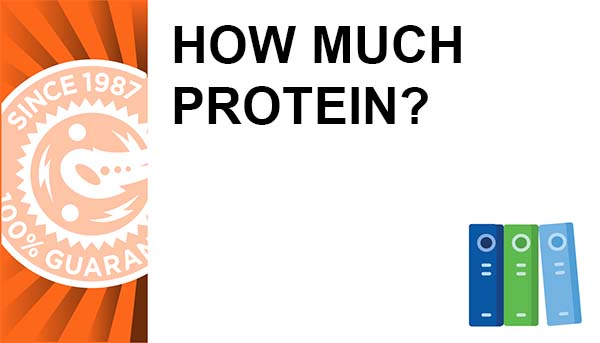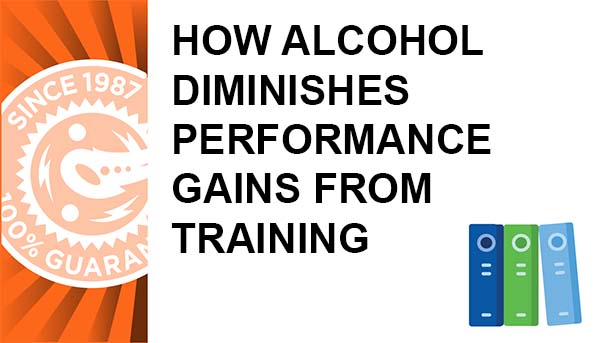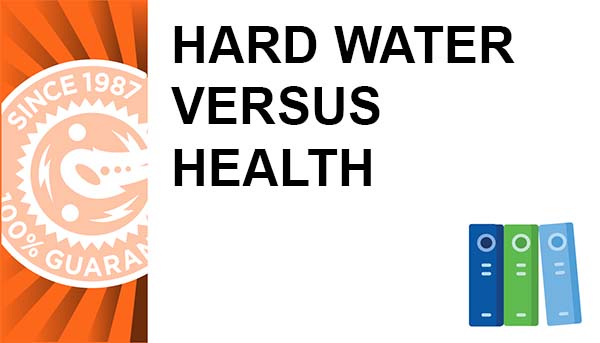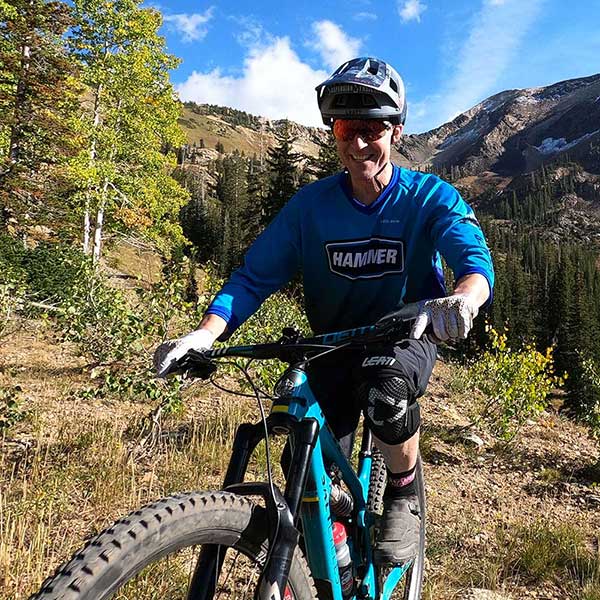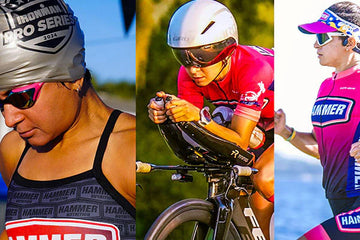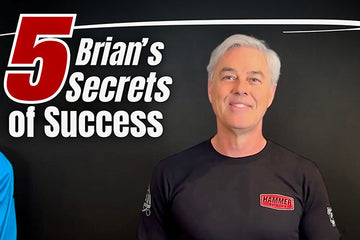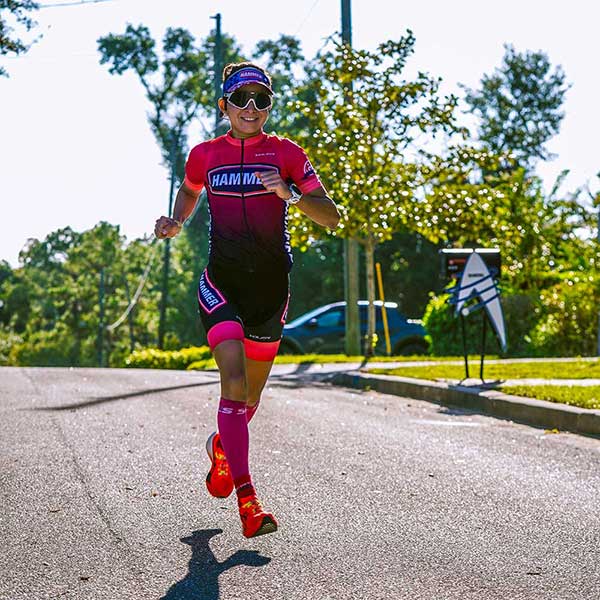By William Misner Ph.D.
Introduction
PROBLEM: Prolonged exercise in the heat coupled with fitness preparation, acclimatization to course conditions, fluid overdose, osmolar influences generated by poor calorie selection may alter serum sodium levels in such a manner as to induce severe or critical hyponatremia. There are multiple mechanisms that increase the risk of symptomatic hyponatremia. There are 3-stages of hyponatremia commonly reported in endurance exercise lasting 4 hours or longer (Armstrong et al. 1993; Noakes 1992, 2003, 2004; Holdy 2005; Twerenbold et al. 2003):
- Mild Hyponatremia plasma sodium levels under <135 mmol x L(-1).
- Severe Hyponatremia plasma sodium levels below < 130 mmol x L(-1) compromising health and performance.
- Critical Hyponatremia plasma sodium levels below 120 mmol x L(-1) (may be fatal).
As the heat index, fluid volume, fluid sweat loss, calorie volume from sugars more than long-chain carbohydrates, and exercise duration increase, the proportionate risk for onset of hyponatremia increases. Each of the former is multiplied if the athlete is unfit, unacclimatized to course, weather, and altitude. It is likely that anyone exercising 4 hours or more in the heat is exposed to mild hyponatremia with or without symptoms. Endurance athletes who experience mild hyponatremia should make every effort to avoid the latter stages of hyponatremia, since severe or critical stages are harmful-to-health and potentially life-threatening. It is the purpose of this paper to present the problem, its various mechanisms, and to present preventative "Solution-s" (oral = remedial).
WHAT IS THE DYNAMIC ROLE OF ORAL SODIUM SOLUTIONS?
Sodium is the principal cation (positively-charged ion) in intracellular fluid. The average person human body contains 95 grams (mainly from of Sodium Chloride). Sodium comprises 0.15% of human body weight. Approximately 60% or 57 grams of sodium is stored in the fluids surrounding the cells (extracellular) while only 10% or 9.5 grams concentrates inside the body's cells (intracellular). Most Americans consume too much sodium. The average daily American diet contains 2-20 grams of Sodium per 24-hour period. From performing individual dietary analysis of foods and drinks consumed by endurance athletes [1], I observed that an average dietary sodium intake ranged between 6000-8000 mg daily. There is a considerable sodium store volume due to dietary excess and around 57,000 mg sodium available in the extracellular spaces. Rapid intake of fluid volume or fluid loss sounds an endogenous alarm to spare fluids at a greater rate than sodium.
THE SAFE UPPER DOSE MODEL: The American Dietetic Association (ADA) recommends limiting sodium intake to 2,400 mg (2.4 g) or 6,000 mg (6 g) sodium chloride (salt) to per day. By contrast, these same ADA nutritionists recommend Sodium intake between 500-700 mg/liter per hour or a total of 12,000-16,800 mg (12-16.8 grams) over a 24-hour endurance event. Unless sodiums excretory rate balances intake with fluid volume, the result may be sodium-toxicity symptoms shortly after intake breaches 12,000 mg (12 grams) in a 24-hour period.
The ADA modifies their safe upper dose sodium limit during exercise to 5-7 times more per hour. The human bodys biochemistry continuously and meticulously monitors and controls fluid volume and sodium levels through multiple pathways. It is through these controls that sodium and fluid levels are critical for survival and attaining optimal health. Liberal overdose more than deficiency increases the risk of losing endogenous natural controls and the predicted health benefit from dietary sodium. How much sodium is required to attain health? Humans require only 8-21 mg sodium each hour in the circulation (specifically 500-2,400 mg 0.5-2.4 grams each 24-hours). Take note that these values reflect 480% variance between lower dose and upper safe limit sodium dose (ADA). Sodium like vitamin C may differ 500% between subjects as to how there body responds positively to sodium dose intake.
What sodium solution during exercise maintains health?
If the ADA & ACSM position paper to limit sodium for optimal health objectives, similar hypothetical limits on sodium intake during exercise are presented. Do lower sodium intake limits during prolonged endurance exercise have merit? Between 1997-2004, I observed that 99 out of every 100 consumers reported remarkable success in endurance events using a low sodium electrolyte supplement, (Endurolytes). Unlike higher sodium electrolyte supplements, Endurolytes provide 160-320 mg sodium per 13-28 fluid ounces or (0.19-0.38 g/l). This low-sodium model effectively reduced degrading serum sodium, preventing severe or critical hyponatremia during prolonged exercise when fluid volume is restricted to less than 1 liter/hour in events lasting from 4-24 hours. One female past winner of the Leadville 100-mile run prior to the event reported blood lab serum sodium levels within normal reference range. Following her winning performance taking only 1 Endurolyte (40 mg sodium/hour) per hour, blood lab sodium values were still within normal reference range! This sodium model solution is surprisingly compatible with the ACSM (1996) and ADA (2000) position paper keeping under the safe upper sodium limit recommendation of 2400 mg/24-hour in sedentary state. The upper safe sodium dose restriction is supported by negative influences on health from chronic high-sodium and high-salt intake:
EXCESS CHRONIC DIETARY SODIUM (OR SALT) COMPROMISES HEALTH
There is good reason to limit chronic sodium intake. Excess salt use or high dietary sodium has been associated from with congestive heart failure, high blood pressure, gastric ulcers, muscle stiffness, irritability, PMS Syndrome, edema, thirst, liver disorders, & osteoarthritis:
CONGESTIVE HEART FAILURE: In congestive heart failure the activation of the renin-angiotensin-aldosterone system causes sodium retention and the secondary hyperaldosteronism may result in elevated intracellular sodium via a direct permeability effect on the cell membrane. In 297 congestive heart failure patients (previously treated with diuretics), 12% were found to have abnormally high blood sodium levels and 57% had excessive muscle sodium (Wester et al. 1986).
HYPERTENSION CAUSED BY SALT, NOT SODIUM: Many researchers believe that sodium elevates blood pressure and is therefore implicated in hypertension (Haddy et al.1995, Skrabal et al. 1981, Gordon, L. 1995). This aspect of sodium is still being debated and many researchers also believe that sodium has been falsely "blamed" for hypertension when the true cause is the chlorine component of sodium chloride.
GASTRIC ULCERS: Excessive consumption of Sodium is associated with an increased risk of Gastric Ulcers (Sonnenberg 1986).
CALCIUM LOSS BONE MINERAL MASS LOSS: Excessive sodium (above 2 grams per day) increases the body's excretion of calcium via the urine (Evans et al. 1995, Matkovic et al. 1995, Heaney 1996). Increasing sodium consumption by 1 gram per day causes 500 mg calcium taken from bone can attribute to bone loss of 1% per annum unless calcium loss is compensated for by supplementation or increased dietary calcium intake (Shortt et al. 1988).
CATARACTS: Persons who consume the highest amounts of salt (and butter) have double the cataract risk compared with persons who consume the lowest amounts of these foods (Tavani et al. 1996).
TOXIC METAL EXCESS: Aluminum is often added to commercially manufactured table salt as an anti-caking agent. Avoid or limit all high-salt processed foods. Excess toxic Aluminum deposits have been reported in Alzheimers patients compared to less Aluminum in persons in the same age and locale.
RAPID CHANGES IN SERUM SODIUM: Evidence of rapid changes in serum sodium increase or decrease the body's physiology drive to control changes brought about by excessive intake or rapid sodium loss. Dietary habit typically is the culprit for excess while extreme exercise in climate or course conditions the athlete is unprepared or unacclimatized rapidly deplete serum sodium.
HEALTH RISKS REDUCED BY FITNESS AND ACCLIMATIZATION
Extreme endurance exercise (24-hour endurance event) is shown to challenge several hematological, biochemical, and endocrinological parameters but each one is mediated by being fit and acclimatized. In spite of an average extreme weight loss during the event of -7.26 lbs (-4.5% body weight loss), not one of these athletes made use of medical care. Data collected after this contest reflect irregular blood-chemistry-endocrinological responses:
- 1. Bodyweight loss -7.26 lbs average
- 2. Mild Hyponatremia
- 3. Intravascular Hemolysis
- 4. Increased Triglyceride Turnover
- 5. Acute-phase Reaction
- 6. Hyperaldosteronemia 2061 +/- 1013 Pmol.l-1)
- 7. Hypercortisolemia 971 +/- 486 Nmol.l-1)
- 8. Hyper-growth-hormonemia (Median 6.8 Ng.ml-1)
- 9. Hypoinsulinemia
- 10. Hypo-free-testosteronemia (42 +/- 17 Pmol.l-1)
- 11. Protein Catabolism
- 12. Depressed Testicular Function
- 13. Oliguria Muscle Cell Leakage
Gastmann et al. 1998 thus concluded that there are NO acute health risks in healthy athletes who are well prepared and carefully supplied during a 24-hour endurance event. Being well prepared requires training the body to adapt its fluid exchange stores, sodium serum exchange, and calorie solution based on loss due to elevated heat index, altitude, and exercise-induced expenditures. The complexity of solution replacement must avoid all the possible conditions that contribute to digressing stages of severe or critical hyponatremia.
HYPONATREMIA
Too much water with too little sodium in the circulation results in 3 forms of low serum sodium. The last two stages are life threatening while the first stage is typical in endurance events though less symptomatic. Most low serum sodium symptomatic reactions occur due to rapid changes in the extracellular water spaces though this may indirectly affect the intracellular water volume. The electrolytes within these 2 fluid compartments differ sharply. In the extracellular fluid, sodium chloride predominates, but in the intracellular fluid, potassium and phosphate are the primary electrolytes. Colgan insists that potassium[2], not sodium, is a better supplement choice for athletes, "Your sweat is less salty than you are." The body conserves electrolytes relative to water, meaning that when sweating, water is what you need most to replenish. He emphasizes that exogenous "Sodium is definitely anti-ergogenic"[3] The kidneys very efficiently conserve sodium so that a sedentary adult needs only 30 mg of sodium a day. The average upper dose safe limit is 2400 mg over 24 hours or may be written as 100 mg/hour. Sodium controls are indeed endogenously strict. Onset of sodium deficiency manifests as dehydration and muscle weakness. Potassium loss through the urine is less strict and unavoidable, so that at least 40 mEq or 1600 mg potassium should be consumed daily. Onset of potassium deficiency manifests as muscle weakness and cardiac arrhythmia. A close review of the body fluid compartments (below) shows where the fluids are stored for supporting healthy metabolism and within us all, several components are dependant upon fluid stores availability:
BODY FLUID STORAGE IN TWO COMPARTMENTS
Approximately 60% of lean body mass is water. Two thirds of total body water is located inside the cells as intracellular fluid (ICF) and one third is extra cellular fluid (ECF). The ECF is further divided into an intravascular compartment (25%) and an interstitial compartment (75%). In a 70 kg man, total body water is 42+ liters of which 28 liters is intracellular, 14 liters are extra cellular, 3.5 liters of the extra cellular fluid is located in the intravascular compartment, and most of the other 10.5 liters is located in the interstitial fluid.
Under normal physiologic circumstances, the body is in fluid balance. Water intake equals water output, by definition. Water intake is normally motivated by thirst and personal habit, while renal fluid losses and insensible water loss via perspiration and loss via the pulmonary and gastrointestinal routes determine water loss. Water from metabolism contributes to the water intake column: From an "Average" intake is estimate; the main determinant of balance[4] under steady state conditions will be water intake, and may vary widely:
| WATER IN | WATER OUT | ||
| Oral Dose | 2000 ml | Kidney Excretes | 2000 ml |
| Metabolism | 500 ml | Insensible | 500 ml |
| Total | 2500 ml | Total | 2500 ml |
When sodium & water imbalances occur, several disorders[5] follow:
SERUM SODIUM EXCESS COMPROMISES HEALTH & PERFORMANCE
Does sodium excess inhibit optimal endurance performance (anti-ergogenic)? [6]
No one should impose health-compromising, performance-debilitating effects from sodium overdose resulting in HYPERNATREMIA. Sodium-overdose produces toxicity symptoms appear shortly after sodium intake of 12,000 mg (12 grams) or more in a 24-hour period. Cellular health requires an isotonic balance[7] between sodium and fluid. Figure 33-8 (below) shows how various changes in osmolality are effected by excessive serum sodium levels (Hypernatremia) or by deficiency in serum sodium levels (Hyponatremia). Fluid volume intake tends to dilute serum sodium, while fluid volume loss tends to increase ratio between fluid and serum electrolytes. Water (fluid) is the osmolar-regulating medium, but the body tends to guard against fluid loss more than sodium loss. Osmolality is influenced by serum sodium concentrations with creation of a "third space" effect due to fluctuations between 260-300 mOsm. Sugar solutions mixed above 8% solution raise osmolality, (or too many long-chain carbohydrate calories above 18% solutions) are poorly absorbed, and present an increased risk to increase osmolality, which reduces systemic electrolyte balance reducing both gastrointestinal sodium transition and serum sodium levels. It is important to avoid consuming too many carbohydrate-calories (especially simple sugars) during hyperthermic endurance events. The osmolality of a long chain carbohydrate (short-chain sugars joined together) may be well tolerated in solutions of 12-18%, however, above that percentage, osmolality issues are likely to reoccur.
Serum RATIO'S interpreted (fluid:sodium) by the brain resulting in thirst & fluid retention[8]:
sodium LOSS & REPLACEMENT ESTIMATE IS BASED ON exercise-INDUCED VOLUME OXYGEN INCREASE
Sodium requirements during exercise may be calculated based on the increased rate of metabolism from resting values to those created by aerobic exercise. Exercise or elevated ambient temperatures and humidity may increase core body temperatures increase proportionate to VO2 volume oxygen expense from aerobic metabolism. Oxygen volume relative to heat volume generated creates core body temperature increases, which are reduced through evaporative sweat creating temporary serum sodium deficits. Fluids lost due to excessive core temperature exposure come from mostly from the Extracellular[9] stores.
SODIUM LOSS FROM EXTRACELLULAR FLUIDS FOR SWEAT-RELATED EVAPORATIVE COOLING
Performance is seriously compromised as soon as 3% body weight fluids are lost. At a 4% fluid bodyweight loss, dehydration further inhibits performance. Mild Hyponatremia is a common biochemical finding in ultradistance triathletes but is usually asymptomatic. Mild hyponatremia is associated with variable body weight changes, though gain or no gain in body weight from fluid overload is observed most cases of severe, symptomatic hyponatremia (plasma sodium mild< 135 mmol/l, severe <130 mmol/l, & critical <120 mmol/l)
VOLUME VO2 AND MINIMUM SODIUM ESTIMATES PROPORTIONATE TO CORE BODY HEAT
Brooks & Fahey (1984) report that a fit-exercising subject requires 12-20 times more oxygen for energy production than an unfit, sedentary person. When the minimal 8-21 mg sodium requirement is factored based on exercise-induced oxygen increases 12-20 times O2, four different sodium repletion rates are derived to estimate the minimal sodium relative to proportionate metabolic increases in O2.
1. 96 mg/hour (12 X 8 mg) 50% VO2 Max or less
2. 160 mg/hour (20 X 8 mg) 50-65% VO2 Max
3. 252 mg/hour (12 X 21 mg) 65-85% VO2 Max
4. 420 mg sodium (20 X 212 mg) 85% VO2 Max and above
For easy walking pace, the minimal required sodium is as little as 96 mg per hour per 34 fluid ounces (1 liter) or as high as 420 mg/l (1 liter) during an all-out effort to reduce negative symptoms from hyponatremia. Low-sodium solutions merited to prevent severe (<130 mmol/l) or critical (<120 mmol/l) hyponatremia in endurance athletes, utilizing 96-420 mg sodium (median - 258 mg per liter 34 fluid ounces). Research has shown that in extreme 24-hour endurance events in spite of extreme high body fluid weight loss of over 4+%, no acute health risks occurred in healthy, fit, acclimatized, well-prepared athletes (Gastmann et al. 1998). Based on sodium and chloride losses during extreme hyperthermic endurance exercise, research shows that fit-acclimatized subjects lose only half the sodium or chloride as an unfit-unacclimatized subject, indicating the importance of sport-specific acclimatization and training (Verde et al. 1982).
EXERCISE-INDUCED SODIUM & CHLORIDE LOSS
GRAMS PER LITER PER HOUR[10]
HYPONATREMIA IS DILUTED SERUM SODIUM
Hyponatremia is defined as any plasma sodium concentration lower than <135 mmol/L. High sweat loss and fluid replacement presents complex systemic issues resulting in fluid retention more than sodium retention. This means that consuming too much fluid only dilutes sodium further imposing a rapid gain in fluid:sodium ratio imposing dilutional hyponatremia, which if it progresses past stage I to stages II or III, it is a medical emergency. Of 371 athletes (62% of all finishers) whose weights were measured before and after the 226 km South African Ironman Triathlon, the athlete who gained the most weight (3.6 kg) during the race was the only competitor to develop symptomatic hyponatremia. During recovery, he excreted an excess of 4.6 litres of urine. This report illustrates that symptomatic hyponatraemia is caused by considerable fluid overload independent of appreciable NaCl loss.
Hyponatremia ORIGINATES FROM fluid excess (dipsomania)
THE MECHANISM: Delayed diuresis in this condition is not caused by renal failure (Noakes et al. 2004; Jenky 2005.). Vasopressin or ADH (anti-diuretic hormone) is a hormone that regulates sodium/water balance. ADH is released by the pituitary's assignment to monitor blood sodium concentration and blood volume. Normally when blood sodium drops, ADH secretion drops and the kidneys dump more free water (the urine becomes more dilute), which causes blood sodium concentration increase. When sodium rises, secretion of ADH stimulates the kidneys hold on to free water resulting in dilution of sodium concentration so that it falls back to normal. Sweating heavily decreases in fluid blood volume. The pituitary is more sensitive to blood volume fluid loss than to change in sodium solution concentrations. A fall in blood fluid volume causes a greater release of ADH to try to retain to more water. When sodium and blood fluid volume fall at the same time two contradictory signals occur. Sodium loss stimulates the pituitary to reduce ADH. Fluid loss prevails dictating ADH increase to retain water preferentially as a primary survival mechanism. Fluid loss predominates to increase ADH release than inhibiting it via increased serum sodium. An athlete may be overhydrated or dehydrated resulting in hyponatremia due to the pituitary release of ADH to retain water.
ADH may be released excessively or inappropriately. This is called Syndrome of Inappropriate ADH (SIADH). Release of ADH from the pituitary responds to certain stimuli such as endurance exercise, pain, stress, or narcotic medications. ADH instructs the kidneys to retain water but less sodium. This is seen in a variety of conditions, including post-surgery, head injuries, or in response to certain medications. Under the right conditions, the pain and stress of endurance events is generates SIADH. Hyponatremia most likely results from excess fluid intake but is safely corrected by adding modest amounts of sodium and fluids consumed during an event. Excess fluid intake develops an intestinal "third space" effect. Carbohydrate solutions draw sodium out of the bloodstream into the intestine in order to advance carbohydrate transition across gastric linings. If sodium is taken from the bloodstream to assist transition of the unabsorbed fluids in the intestinal lumen, this causes decreases in serum sodium advancing stages hyponatremia.
There are 3 basic mechanisms that explain most, not all, incidences of hyponatremia during high heat-index prolonged endurance exercise (Jenky 2005[11]):
- Inappropriate excessive ADH (SIADH) due to pain, stress, exercise, NSAIDS, medications
- Fluid Overload
- Sodium Deficiency
SOLUTIONS TO PREVENT HYPONATREMIA
Hyponatremia is a common biochemical finding in ultradistance triathletes but is usually asymptomatic. Typical mild hyponatremia has been associated with variable body weight changes. Fluid overload is the cause of most (73%) cases of severe, symptomatic hyponatremia ([plasma sodium] <135 mmol x L(-1). During endurance exercise, about 75% of the energy produced from metabolism is in the form of heat, which cannot accumulate. The remaining 25% of energy available can be used for movement. As running pace increases, the rate of heat production increases. Also, the larger one's body mass, the greater the heat production at a particular pace. Sweat evaporation provides the primary cooling mechanism for the body. For this reason, athletes are encouraged to drink fluids to ensure continued fluid availability for evaporation and circulatory flow to the tissues. Elite level runners could be in danger of heat illness if they race too quickly in hot/humid conditions and may collapse at the end of their event. Most marathon races are scheduled at cooler times of the year or day, however, so that heat loss to the environment is adequate. Typically, this post-race collapse is due simply to postural hypotension from decreased skeletal muscle massage of the venous return circulation to the heart on stopping. Elite athletes manage adequate hydration by ingesting about 200-800 mL/hour and such collapse is rare. Athletes "back in the pack" are moving at a much slower pace, however, with heat accumulation unlikely and drinking much easier to manage. They are often urged to drink "as much as tolerable," ostensibly to prevent dehydration from hours exercising. Excessive drinking among these participants may lead to more severe stages of hyponatremia, and if allowed to progress, it may result in fatality. Because endurance athletes may vary up to 500% in the manner they metabolize nutrients, the range of solutions may vary by individual athlete.
SOLUTION #1: REDUCE FLUID VOLUME
A more reasonable approach is to urge athletes not to drink as much as possible but to drink ad libitum (according to the dictates of thirst) no more than 400-800 mL/hour or 13.5-27.0 FLUID ounces (Noakes 2003).
SOLUTION #2: FLUID VOLUME (1 LITER) REQUIRES MORE SODIUM
Twerenbold' s data (Twerenbold et al. 2003) concludes that intake of 1 liter/hour in female endurance athletes leads to fluid overload and occasional hyponatraemia (in spite that 1 liter/hour is commonly taken and often recommended for fluid replacement in endurance exercise). This research identifies a fluid liter/hour dose (33.8 fluid ounces) is overload of fluids.
Twerenbold's research tested 3 solutions during 4 hours endurance exercise
1. 1 liter of fluid an hour with (H) with high sodium concentration (680 mg/l)
2. 1 liter of fluid an hour with (L) with low sodium concentration (410 mg/l)
3. 1 liter of fluid an hour with only water (000 mg/l).
They concluded that, "Exercise induced hyponatraemia in women is likely to develop from fluid overload during prolonged exercise. This can be minimized by the use of replacement fluids of high sodium concentration. Sodium replacement of at least 680 mg/h is recommended for women in a state of fluid overload during endurance exercise of four hours." In other word for 34-fluid ounces overdose to be -effectual, sodium must be added to the fluid volume (680 mg sodium/liter) to reduce the risk of fluid overload-induced hyponatremia. This rate of sodium, (20 mg sodium per fluid ounce), calculates to between 270-540 mg sodium required for Noakes' restricted fluid volume recommendations of 13.5-27.0 fluid ounces/hour (Noakes 1992, 2003, 2004).�
SOLUTION #3: UNDER 1 LITER VOLUME REQUIRES LESS SODIUM
LOW SODIUM + LOW FLUID vOLUME SOLUTION PREVENTS onset OF SEVERE OR CRITICAL hyponatremia (HN)
Vrijens and Rehrer (1999) found smaller decreases in [Na+-plasma] when subjects drank 1.2 liters of a sodium-containing sports drink (410 mg/l) each hour as compared to water. Twerenbold's low-sodium dose (above) contained 410 mg sodium/l and EMG's anecdotal reports from Endurolyte consumers support these findings. The sodium solution rate based on 410 mg sodium/liter is 12 mg sodium per fluid ounce. When recalculated to Noakes' restricted fluid intake values of 13.5-27.0 fluid ounces, the model sodium solution range is 162mg/13.5 fl oz to 325 mg/27.0 fl oz to reduce the risk of severe or critical hyponatremia. At Noakes' lower fluid intake recommendations, preventative model is fulfilled by consuming 1-2 Endurolytes with 3-7 fluid ounces water every 15 minutes when exercise and heat exposure exceeds 4 hours or more.
HYPONATREMIA OBSERVATIONS AND EXCEPTIONS
There are physiological anomalies, conflicting individual reactions, and metabolic disorders that may result in complex exceptions to the relationships between serum fluids and electrolytes when endurance exercise is prolonged in the heat.
- Body weight gain occurs more than body weight loss. Post race low plasma sodium levels correlate most body weight gain of 2-5% (Speedy et al. 1999).
- FLUID VOLUME, SODIUM, AND CALORIE SOLUTION were evaluated replacing sweat losses with a sodium-free fluid or low sodium carbohydrate drink (11.9 mg sodium per fluid ounce as 405 mg sodium with 240 calories per liter) would effect the plasma sodium concentration and thereby precipitate the development of hyponatremia. Sweat production was not significantly correlated with plasma sodium reduction. They concluded that consumption of a sodium-containing beverage (11.9 mg sodium & 7 carbohydrate calories per fluid ounce) compensates for large sweat losses incurred during exercise (Vrijens & Rehrer 1999). When Dr. Noakes' lower fluid intake values are applied to the recommendations reported by Vrijens & Rehrer, sodium requirements to prevent severe hyponatremia for each hour in each 13.5-27.0 fluid ounces is 161-321 mg, or 4-8 Endurolytes with 2.4 servings Hammer Gel, 2.4 scoops HEED, 2 heaping scoops Sustained Energy, or 2 scoops Perpetuem.
- SODIUM LOADING, FLUID VOLUME REPLACEMENT DURING EXERCISE may deplete as much as 2-3 liters per hour (68-102 fluid ounces sweat) during extreme heat-stress conditions. Should an athlete attempt to replace all the fluids and sodium at the same rate they are lost? Researchers (Armstrong et al. 1993) presented physiologic evidence regarding the etiology and development of hyponatremia during exercise in the heat. They investigated an athlete who pre-exercise sodium-loaded (137 mEq Na+ for 7-days), training acclimatized by exercising in the heat to avoid hyponatremia. Then during the exercise session, he drank 50 fluid ounces per hour (to replace only 49-73% of a 2-3 liter sweat loss). After only 4 hours of mild, intermittent exercise in heat, this athlete's plasma sodium fell into a severely hyponatremic range (Na+ < 130 mEq.l-1). Between hours 4-7, an inappropriately large release of Vasopressin coincided with a decrease of urine volume to 0 ml.h-1. Vasopressin (AVP, ADH, or antidiuretic hormone} regulates sodium by effects on the kidney: it increases permeability to water in the distal and collecting tubule, increases permeability to urea in the collecting tubule of the kidney, and increases sodium and chloride resorption of the ascending tubule. The kidney is responsible for most of the excretion of sodium from the body, although large amounts can be lost in sweat and feces. Sodium (Na) is one of the major electrolytes in the body, along with others such as potassium, calcium, magnesium, and chloride. The normal level of serum (blood fraction) sodium is 135-145 mM. Sodium levels below 135 mM are designated hyponatremia, and values below 120 mM are often fatal. They concluded that his attempt to replace fluid losses by a large intake (50 fluid ounces/hour X 7 hours) produced fluid retention 94 fluid ounces water coupled with his "low normal" initial plasma Na+ (134 mEq.l-1) were primary factors in hyponatremia. Sodium Na+ losses in sweat and urine were normal and served only to exacerbate his state of hyponatremia. Consuming 50 fluid ounces per hour for 7 hours while exercising in the heat was tolerated for 4 hours, but afterwards large releases of vasopressin were unable to moderate excess fluid overdose resulting in severe hyponatremia. Fluid replacement of sweat loss volume in extreme heat requires considerably less fluid replaced than those lost. Sodium loading prior to an event did not resolve hyponatremia that occurred during exercise. This 50-fluid ounce volume intake each hour produced nearly 1-fluid ounce retention for every 4 fluid ounces consumed. Replacing fluids is important, but this demonstrates that any attempt to do so during prolonged endurance exercise in the heat may endanger the athlete seriously contributing to severe hyponatremia.
- COMPLEX ISSUES FROM HYDRATION OR DEHYDRATION IN ELECTROLYTE TO FLUID RATIO appears when difficult-to-predict variations in contrasting release between Vasopressin (ADH) and Aldosterone occur. When athletes dehydrate, losses in fluid volume through sweating, and/or from under-hydrating, electrolytes lost in sweat are increased but circulating serum electrolytes relative to fluid also increase because fluid is may be lost at a greater rate to keep the body from overheating as a primary survival adjunct. The less an athlete hydrates the more electrolytes are lost in sweat, however when fluids are directed to sweat volume for evaporative cooling, circulating serum electrolyte concentrations increase. Dehydration invokes a greater serum Na+ (142.2), Cl- (105.8),& K+ (5.27) mmol/L higher than the euhydration values for [Na+ (138.9), Cl- (138.9), & K+ (4.88) mmol L(-1)]. Why? Plasma aldosterone increases during exercise in the heat when no or low fluid intake in the heat induces a state of dehydration. Acute exercise-heat stress without fluid replacement is shown to induce greater sweat [Na+] and [Cl-] which was potentially related to greater extracellular fluid [Na+], plasma aldosterone or sympathetic nervous activity (Morgan et al. 2004). Hyponatremia during exercise occurs with and without symptoms. Mild hyponatremia can present with minimal symptoms. Severe or critical hyponatremia produce performance-inhibiting life-threatening symptoms. Symptomatic hyponatremia is usually characterized by severe alterations in cerebral function including coma and grand mal seizures; it develops especially in less competitive athletes who have maintained high rates of fluid intake during endurance events lasting at least 5 hours. Hyponatremia becomes symptomatic when the volume of excess fluid retained exceeds 2 to 3 liters. Possibly as many as three or more pathologies (abnormal fluid retention possibly due to inappropriate ADH secretion, abnormal regulation of the extracellular fluid volume, translocation of sodium into a "third space") must be present for symptomatic hyponatremia to develop. The avoidance of overhydration is the one certain way that susceptible individuals can prevent symptomatic hyponatremia. Sodium chloride containing solutions ingested in physiologically significant concentrations may prevent a possible "third space" effect when hydration levels exceed the individual physiological tolerance (Noakes 1992, 2003, 2004).
CONCLUSION
I continue to marvel that well intended "experts advice" to endurance athletes is to replace fluids, fuels, and electrolytes at the same rate they are lost. If that advice had merit, someone would be able to complete the 26th mile at the same pace as his or her 1st mile in a marathon on a hot and humid day. When training, acclimatization, minimal solution models are correctly applied to progressive training, potentially severe stages of exercise-induced hyponatremia may be avoided by replacing 20-30% of the exercise-induced calorie-electrolyte-fluid expense. This model solution is a long chain 240-280 calorie with 161-321 mg sodium taken in a 13.5-27.0 fluid ounce 1-hour mix divided in 3-4 small doses. If an athlete experiences the need to divert more than 10% beyond this recommendation during elevated heat exposure, sodium only should be modestly increased in attempt to remedy acute heat stress. If symptoms progress, the athlete is advised to cease exercise immediately.
References
Armstrong LE, Curtis WC, Hubbard RW, Francesconi RP, Moore R, Askew EW. Symptomatic hyponatremia during prolonged exercise in heat. Med Sci Sports Exerc. 1993 May;25(5):543-9. PMID: 8492680 [PubMed - indexed for MEDLINE]
Brooks GA, Fahey TD. Exercise Physiology. New York: John Wiley & Sons, 1984.
Colgan M. Optimum Sports Nutrition. Advanced Research Press. New York 1993:195-196.
Evans, C., et al. Adaptation to high dietary sodium intake. Challenges of Modern Medicine. 7:413-418, 1995.
Gastmann U, Dimeo F, Huonker M, Bocker J, Steinacker JM, Petersen KG, Wieland H, Keul J, Lehmann M. Ultra-triathlon-related blood-chemical and endocrinological responses in nine athletes. J Sports Med Phys Fitness. 1998 Mar;38(1):18-23. PMID: 9638027 [PubMed - indexed for MEDLINE]
Gordon, L. Exercise and salt restriction may be enough for mildly high BP. Medical Tribune. December 21, 1995.
Haddy, F. J., et al. Role of dietary salt in hypertension. Journal of The American College of Nutrition. 14(5):428-438, 1995.
Kalman E. Holdy, M.D. Fluid and Electrolyte Balance: A Must With Nutrition Support. 2005. The Oley Foundation @: http://c4isr.com/oley/
Heaney, R. P. Calcium bioavailability. Contemp Nutr. 11(8), 1986.
Matkovic, V., et al. Urinary calcium, sodium and bone mass of young females. American Journal of Clinical Nutrition. 62:417-425, 1995.
Morgan RM, Patterson MJ, Nimmo MA. Acute effects of dehydration on sweat composition in men during prolonged exercise in the heat. Acta Physiol Scand. 2004 Sep;182(1):37-43. PMID: 15329055 [PubMed - indexed for MEDLINE]
Noakes T; IMMDA. Fluid replacement during marathon running. Clin J Sport Med. 2003 Sep;13(5):309-18.
Noakes TD, Sharwood K, Collins M, Perkins DR. The dipsomania of great distance: water intoxication in an Ironman triathlete. Br J Sports Med. 2004 Aug;38(4):E16. PMID: 15273209 [PubMed - indexed for MEDLINE]
Noakes TD. The hyponatremia of exercise. Int J Sport Nutr. 1992 Sep;2(3):205-28. Review. PMID: 1299494 [PubMed - indexed for MEDLINE]
Shortt, C., et al. Influence of dietary sodium intake on urinary calcium excretion in selected Irish individuals. Eur J Clin Nutr. 42595-603, 1988.
Skrabal, F., et al. Low sodium/high potassium diet for prevention of hypertension: Probable mechanism of action. Lancet. 2:895, 1981.
Sonnenberg, A. Dietary salt and gastric ulcer. Gut. 27:1138-1142, 1986.
Speedy DB, Noakes TD, Rogers IR, Thompson JM, Campbell RG, Kuttner JA, Boswell DR, Wright S, Hamlin M. Hyponatremia in ultradistance triathletes. Med Sci Sports Exerc. 1999 Jun;31(6):809-15. PMID: 10378907 [PubMed - indexed for MEDLINE]
Tavani, A., et al. Food and nutrient intake and risk of cataract. Ann Epidemiol. 6:41-46, 1996.
Twerenbold R, Knechtle B, Kakebeeke TH, Eser P, Muller G, von Arx P, Knecht H. Effects of different sodium concentrations in replacement fluids during prolonged exercise in women. Br J Sports Med. 2003 Aug;37(4):300-3; discussion 303. PMID: 12893712 [PubMed - indexed for MEDLINE] or full text free @: http://bjsm.bmjjournals.com/cgi/content/full/37/4/300
Verde T, Shephard RJ, Corey P, Moore R. Sweat composition in exercise and in heat. J Appl Physiol. 1982 Dec;53(6):1540-5. PMID: 7153150 [PubMed - indexed for MEDLINE] http://jap.physiology.org/cgi/reprint/53/6/1540
Vrijens DM, Rehrer NJ. Sodium-free fluid ingestion decreases plasma sodium during exercise in the heat. J Appl Physiol. 1999 Jun;86(6):1847-51. PMID: 10368348 [PubMed - indexed for MEDLINE]
Wester, P. O., et al. Intracellular electrolytes in cardiac failure. Acta Med Scand. 707(Supplement):33-36, 1986.
Unpublished data taken from the author's First Data Bank Nutrition IV Dietary Analysis program (1996-2005).
Colgan M. Optimum Sports Nutrition. Advanced Research Press. New York 1993:195-196.
From WATER METABOLISM, Edward P. Nord, M.D. @:
http://www.uhmc.sunysb.edu/internalmed/nephro/webpages/Part_B.htm
By permission, courtesy of Lippencott & Williams, Copyright 2005 Lippincott Williams & Wilkins - All Rights Reserved, Chapter 33: Disorders of Fluid and Electrolyte Balance @: http://connection.lww.com/Products/porth7e/Ch33.asp
Colgan M. Optimum Sports Nutrition. Advanced Research Press. New York 1993:195-196.
By permission, courtesy of Lippencott & Williams, Copyright 2005 Lippincott Williams & Wilkins - All Rights Reserved, Chapter 33: Disorders of Fluid and Electrolyte Balance @:
http://connection.lww.com/Products/porth7e/Ch33.asp
From Lippencott & Williams, Chapter 33: Disorders of Fluid and Electrolyte Balance @: http://connection.lww.com/Products/porth7e/Ch33.asp
From Lippencott & Williams, Chapter 33: Disorders of Fluid and Electrolyte Balance @: http://connection.lww.com/Products/porth7e/Ch33.asp
Verde et al., 1982
Jenky M. HYPONATREMIA AND EXERCISE, PART 2 - MECHANISMS @:
http://www.rice.edu/~jenky/sports/hyponatremia.html
